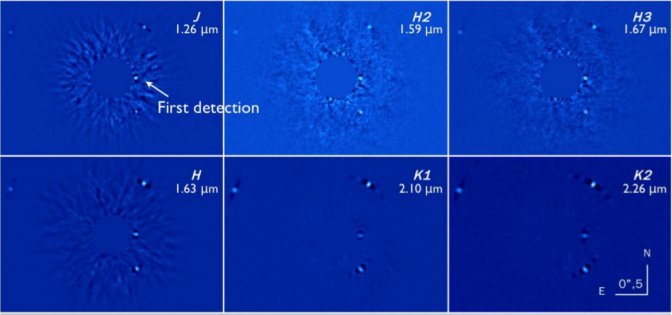Science
4 March 2014 ( maj : 25 November 2016 ), by
How giant exoplanets form, evolve and are structured is one of the biggest challenges of modern astronomy. This major goal is directly connected to the ultimate search for Life over the Horizon 2030. Nevertheless, several astrophysical (formation, evolution, dynamics, structure and atmosphere), biological (bio-markers) and technical (new technologies developed for next generation of instrumentation) steps must be carried out in that perspective. We need to understand how exo-giants are formed and structured, how they evolve and interact as they will completely shape the planetary system architecture and therefore the possibility to form telluric planets capable to host Life.
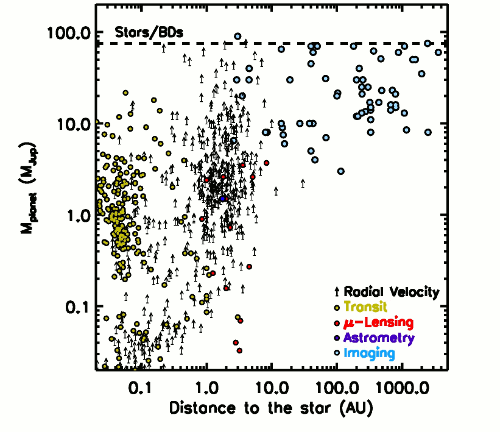
The main statistical constraints on exoplanets originally came from the radial velocity (RV) technique. More than 1000 EPs have been now confirmed, featuring a broad range of physical and orbital characteristics around different stellar hosts. More recently, a plethora of transiting planetary candidates have been revealed by Kepler (more than 2300 candidates known today), probably corroborating how abundant telluric planets are and in agreement with Doppler surveys. However, despite this success of these indirect techniques, the time spans explored limit the studies to the close (≤ 5 − 6 AU) EPs. Within the coming years, direct imaging represents the only viable technique for probing the exis- tence of EPs and BD companions at large (≥ 5 − 6 AU) separations. This technique is also unique for the characterization of planetary atmospheres that are not strongly irradiated by the planetary host.
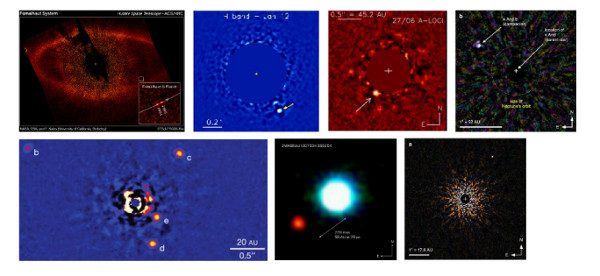
In this context, after already a decade of direct imaging discoveries, SPHERE will open a new observing window to probe the population of giant planets in the region where the own giants of our Solar System are (> 5-10 AU). Models of planet formation predict that the peak of formation of giant planets is found close to the snowline. In outer regions, planet formation is a less efficient process. However, migration mechanisms and long term orbit instabilities will alter the original distribution. Determination of the frequency of giant planets in wide orbits (> 5-10 AU) will allow to test basic aspects of the planet formation and evolution models. Beside frequency, it would also be interesting to derive the distributions of planets parameters such as mass, semi-major axis and eccentricities, as well as their dependency on the stellar host properties.
Young (≤ 500 Myr), nearby stars are ideal labolatories for the study of planetary formation and evolution. Since the discovery of the TW Hydrae association by Kastner et al. (1997) and Hoff et al. (1998), more than 300 young, nearby stars were identified. They are gathered in several groups (TWA, β Pictoris, Tucana-Horologium, η Cha, AB Dor, Columba, Carinae), sharing common kinematics, photometric and spectroscopic properties. They represent a first reservoir of targets for SPHERE completed by young active F-K dwarfs of the Solar neighbourhood (ages less than 1 Gyr, d < 50pc), the nearest stars (all ages within 20pc of the Sun) that will allow to probe the smallest orbits and will also be the only opportunities for detecting planets by directly reflected light, the stars with known planets, especially any that exhibit long-term residuals in their radial velocity curves, indicating the possible presence of a more distant planet (F-G-K stars within 50-100pc), finally, the planetary system candidates identified by astrometric surveys like GAIA. Other types of targets will include a set of planets shining by reflecting stellar light might be detected by the SPHERE polarimetric channel (ZIMPOL).
In that context, the main scientific goals of SPHERE are then:
- The description of the properties of young planets in the expected peak region of gas giant formation and in the outer regions of the systems. Imaging of planets already detected by radial velocity and/or astrometry would additionally represent a major breakthrough thanks to the availability of dynamical constraints (or even full orbit determinations) on the planet masses and on the orbital elements.
- The physical characterization of the young planetary systems architecture,
- The study of the planet-disk interactions,
- The characterization of the young planetary atmospheres and physics,
The key scientific programs can be declined as follows :
- DISKS: Planets form in the massive disks surrounding young stars. As the system evolves, planets co-exist and interact with rings of planetesimals that produce dust in collisions. We need to understand how the disk properties guide and govern the planet formation process, and how they reflect the system’s architecture. The long-term goal is to derive a physical picture that connects the processes in disks to the large diversity of planetary system architectures that has emerged over the last two decades. SPHERE studies focus here on the characterization of the spatial structures of young proto-planetary and debris disks.
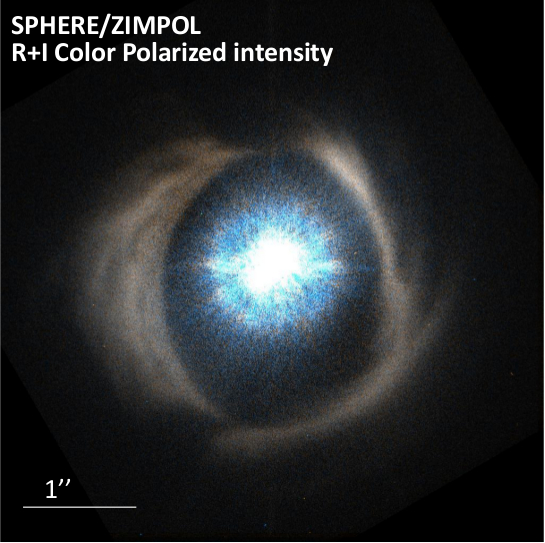
- EXOPLANETS AND BROWN DWARFS: Our understanding of the origin and evolution of extrasolar planets has drastically transformed in the last decade. Current theories favor the formation of planets within a protoplanetary disk by accretion of solids, building up a core followed by rapid accumulation of gas, or by
gravitational instability of the gas. The planets could either migrate toward
or away from the star by disk-planet interactions or by planet-planet interactions, which will alter the original semi-major axis distribution. A wide range
of potential planet masses, sizes, locations and compositions results from this diverse set of physical processes.
A major goal for exoplanetary science of the next decade is a better understanding of these mechanisms. In
this context, the role of observations is crucial to provide constraints that will help to understand the diversity
of exoplanetary properties. SPHERE plays here a key role to study the occurrence of giant planets at wide orbits and their physical and orbital
characteristics (composition, mass, radius, luminosity, distribution of mass, period and eccentricity).
- YOUNG AND EVOLVED STARS:
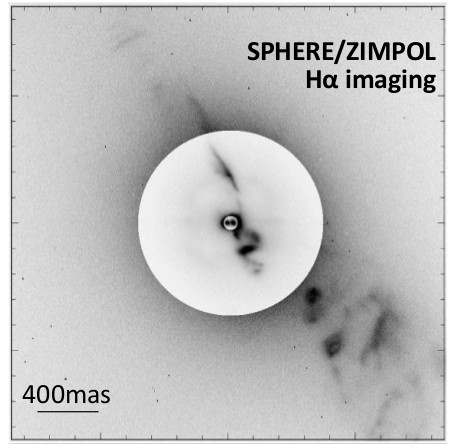
SPHERE will also improve our understanding of the physics of brown dwarfs, stellar formation, disk and jets, Solar System objects and evolved stars, and nicely enrich the scientific impact of the instrument.
Links:

